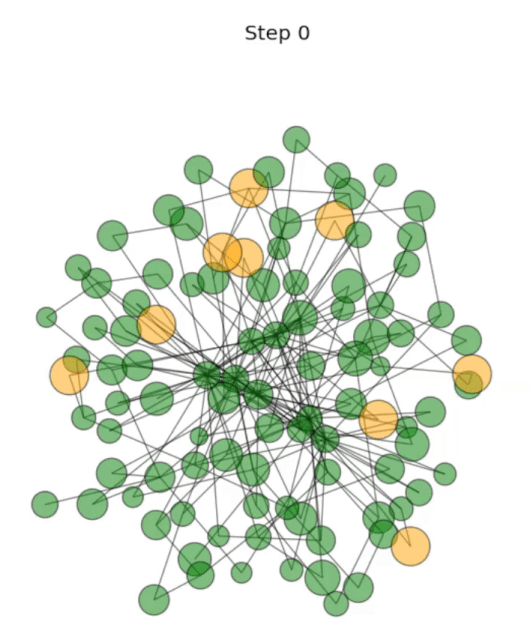Current Social Epidemiology Cluster doctoral student Steve Mooney and former Cluster faculty member Abdulrahman El-Sayed recently published a paper in Social Science & Medicine showing that a weight-stigma mechanism could explain the finding that depression among the obese is more common in contexts in which obesity itself is less common.
Mr. Mooney and Dr. El-Sayed built an agent-based social network simulation, wherein simulated ‘agents’, representing people, were embedded in a network, representing the social networks existing between people. The simulated agents were then influenced by their environments and each other according to pre-set rules. For example, to simulate stigmatization, agents dropped connections to other agents whose BMIs were substantially higher than the BMIs of other agents nearby in the graph.
When they ran this model in a high-obesity context calibrated to Mississippi and a low-obesity context calibrated to Colorado (Mississippi and Colorado are the states with the highest and lowest obesity rates, respectively, in the Centers for Disease Control and Prevention’s annual Behavioral Risk Factor Surveillance System survey), they found that there were more stigmatizing events and consequent depression among the obese in simulated Colorado than in simulated Mississippi. This result is consistent with the real-world finding that depression among the obese is more common in contexts where obesity itself is less common, suggesting that stigma could be a mechanism underlying this pattern.

The Agent Based Model running over 10 years. Circles represent agents, and the lines connecting the circles indicate network ties. The relative size of the circle indicates the body mass index of the agent. As the model progresses and more agents become obese, the obese agents become increasingly isolated.
While exploring the dynamics of the model more broadly, they found that while both reducing environmental obesogenic forces (for example, by ensuring access to healthy foods and spaces for physical activity) and encouraging individual resistance to environmental forces (for example, teaching people ‘the seven minute workout’) were effective in blocking obesity, individually-targeted interventions caused stigma-inducing disparities between simulated agents for whom interventions were successful and those for whom interventions were unsuccessful. This resulted in higher overall levels of depression when only some agents were targeted for intervention or when individually-targeted interventions were only partially successful. By contrast, environmental interventions that were only partially successful did not induce stigma.
These results add to a literature suggesting that weight-based stigma is a concerning problem, and suggest that individually-targeted interventions should take care to avoid increasing social isolation among those who remain obese.

